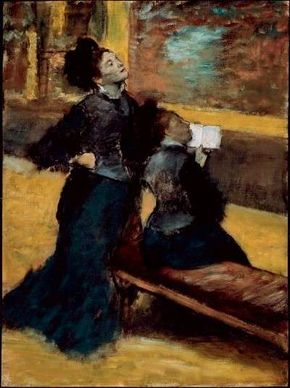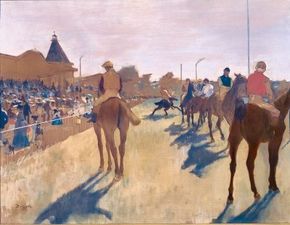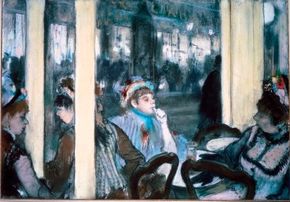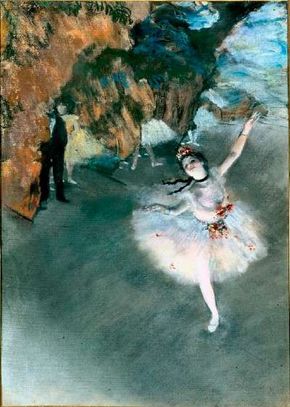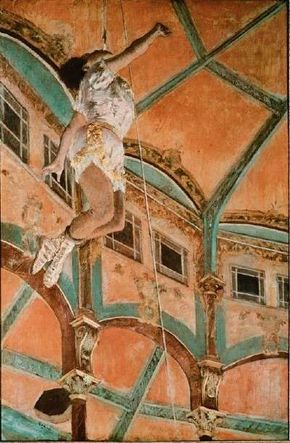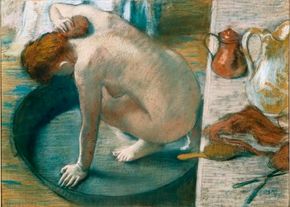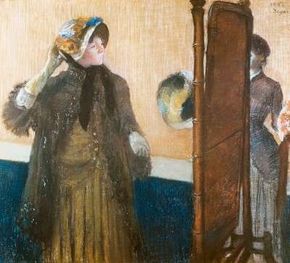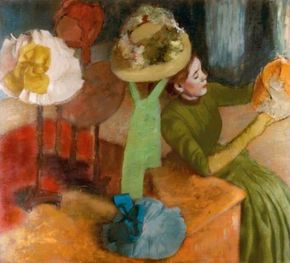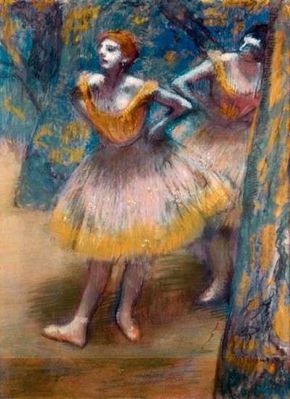Hilaire-Germain-Edgar Degas (1834-1917) was traditionally a trained painter, who, as an aspiring young artist, became a member of the group around Edouard Manet.
A superb draughtsman and a master of bold compositions, Edgar Degas was able to impose a sense of immediacy on his work, which became particularly evident in his famous paintings of dancers, who were the subject of over half of his collected work.
Advertisement
Hilaire-Germain-Edgar Degas liked to cut off figures in his compositions to give the impression of spontaneous observation in his paintings. He also worked with lines of vision and asymmetry to achieve this effect.
Although he worked in various media -- including bronze -- pastels became his chosen medium in his old age. Learn more about Hilaire-Germain-Edgar Degas's Impressionist techniques and his life's work on the following pages.
- Visit to a Museum: Bold compositions bring two women's visit to a museum to life in this Degas Impressionist painting from the late 1870s.
- Portrait of Thérèse Degas: This Impressionist painting of the artist's sister shows Degas's dedication to and talent for precisely presenting his subjects as they were.
- Horses Before the Stands: Learn why every aspect of Degas's racecourse paintings was thoroughly modern -- from the subject matter to the composition.
- The Cotton Exchange at New Orleans: This extremely detailed Impressionist painting, which features several members of Degas's family, wonderfully captures a moment in time.
- Women in Front of a Café, Evening: Degas, for the most part, only depicted Parisian life. See modern, everyday Parisian life in this Impressionist painting.
- The Star (L'Étoile): Degas sketched this famous Impressionist painting while sitting in the ballet looking down on the stage.
- Miss La La at the Cirque Fernando: It took great precision and much preparation for Degas to successfully capture the excitement felt by circus audiences when watching the stunt portrayed in this Impressionist painting.
- Examen de Dance (Dance Examination): Pastels were especially suited for Degas's dance works, as they allowed the artist to work swiftly and in the moment. See his use of pastels in this painting.
- Little Dancer of Fourteen Years: A master of the gracefulness of the dance, Degas even managed to convey that same lightness in this bronze sculpture.
- The Tub: Degas pioneered the approach to the nude. Read about the differences between the classical composition of the nude and Degas's preferred approach.
- At the Milliner's: Degas was a master of evoking the sense of spontaneous observation in his work. Learn which compositional approaches he used to achieve this through the image of At the Milliner's.
- The Millinery Shop: Degas would often choose an unusual point of view. Find out how it affects the composition and focus in this Impressionist painting.
- Two Dancers: Degas's usage of pastels to create strong strokes and harsh color contrasts evoke a sense of presence in this mature Impressionist painting.
On the next page, see a portrait of Mary Cassatt visiting a museum with her sister. Cassatt was the only woman and the only American to become a part of the Impressionist group.
For more on Impressionist paintings, artists, and art history, see:
Advertisement
